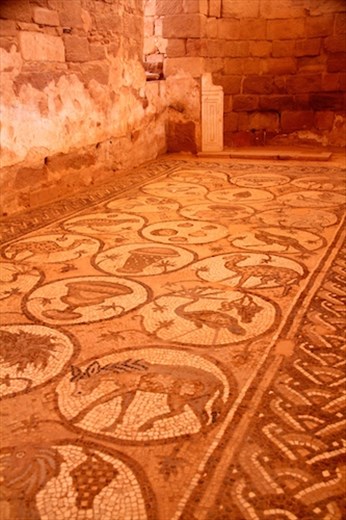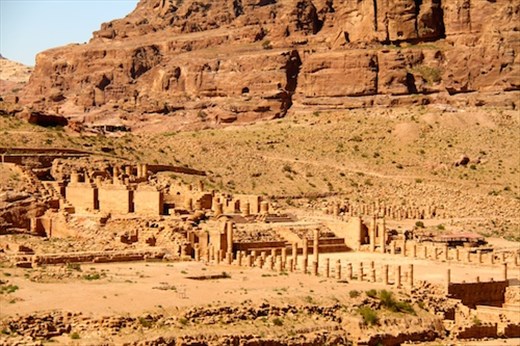PETRA HASN’T CHANGED MUCH SINCE WE WERE HERE last — not much, in fact, since the Romans were here. You still enter through the “Siq,” the 1200 meter-long slot canyon that leads to the iconic “Treasury” and your first glimpse of Petra. And once inside the magic and mystery are accented by colorfully adorned camels and braying donkeys and mules. There aren’t as many local squatters living in the caves with their goats but they have set up stalls selling all manner of souvenirs at outrageous prices. A cold can of Diet Coke goes for $3, a bargain after the long climb to the “Monastery.” The entry fee has gone up, too. In 2006 we paid $60 each for a seven-day pass; today it cost us $90 each for a three-day entry, which is a good discount from the $50 daily fee.

First view of the Treasury from the Siq
By entering before 8:30 we avoided the tour groups and the rising temperatures. Even with the groups you can find solitude once you are through the Siq — Petra is just so huge. On Day One we skimmed the surface, just checking things out and getting our bearings. Five hours is about our daily limit but even so, we covered much more of Petra than the average visitors who seldom get much beyond the Treasury. One of our goals was the mosaics at the Byzantine Church which was built towards the end of Petra’s use-by date.

Byzantine mosaics
In case you are wondering, Petra wasn’t on the Silk Road but was a rest stop on the Incense Route from Yemen, back in 300 BC when frankincense was worth more than gold and the “Treasury” wasn’t used to store money. Most of the edifices carved into the rock have been given romantic names by the archeologists who developed the site. And speaking of archeologists, our other goal was the Great Temple, a site that was in the early stages of excavation in 2006. Kudos to sponsors Brown University who have done a magnificent job of restoring the site and still have years of work ahead of them.

Great Temple, great work. Thank you, Brown University